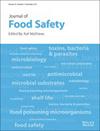Design and Implementation of a Step-Traversing Two-Wheeled Robot
Journal of Rapid Methods and Automation in Microbiology
Pub Date : 2013-06-30
DOI:10.4018/978-1-4666-4225-6.CH007
引用次数: 2
Abstract
In this chapter, the authors present the design and implementation of a step-traversing two-wheeled robot. Their proposed approach aims to extend the traversable workspace of a conventional two-wheeled robot. The nature of the balance problem changes as the robot is in different phases of motion. Maintaining balance with a falling two-wheeled robot is a different problem than balancing on flat ground. Active control of the drive wheels during flight is used to alter the flight of the robot to ensure a safe landing. State dependent feedback controllers are used to control the dynamics of the robot on ground and in air. Relationships between forward velocity, height of step, and landing angle are investigated. A physical prototype has been constructed and used to verify the viability of the authors' control scheme. This chapter discusses the design attributes and hardware specifications of the developed prototype. The effectiveness of the proposed control scheme has been confirmed through experiments on single- and continuous-stepped terrains.跨步两轮机器人的设计与实现
在本章中,作者介绍了一种跨步两轮机器人的设计与实现。他们提出的方法旨在扩展传统两轮机器人的可穿越工作空间。平衡问题的性质随着机器人运动阶段的不同而变化。与一个下落的两轮机器人保持平衡与在平地上保持平衡是不同的问题。在飞行过程中主动控制驱动轮来改变机器人的飞行,以确保安全着陆。采用状态相关反馈控制器对机器人在地面和空中的动力学进行控制。研究了前向速度、台阶高度和落地角度之间的关系。构建了一个物理原型,并用于验证作者控制方案的可行性。本章讨论了所开发原型的设计属性和硬件规格。通过在单台阶和连续台阶地形上的实验,验证了所提控制方案的有效性。
本文章由计算机程序翻译,如有差异,请以英文原文为准。
求助全文
约1分钟内获得全文
求助全文

 求助内容:
求助内容: 应助结果提醒方式:
应助结果提醒方式:


